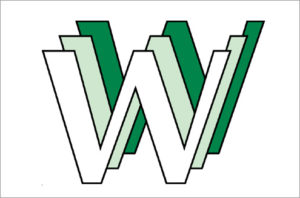
Date: 01/01/1993The name Robert Cailliau may not ring a bell to the general public, but his invention is the reason why you are reading this: Dr. Cailliau together with his colleague Sir Tim Berners-Lee invented the World Wide Web, making the internet accessible so it could grow from an academic tool to a mass communication medium. Last January Dr. Cailliau retired from CERN, the European particle physics lab where the WWW emerged.
Robert Cailliau is most well known for the proposal, developed with Tim Berners-Lee, of a hypertext system for accessing documentation, which eventually led to the creation of the World Wide Web. In 1992, Cailliau produced the first Web browser for the Apple Macintosh. In 1993, Cailliau started “WISE”, the first Web-based project at the European Commission (DGXIII) together with the Fraunhofer Gesellschaft. Cailliau also started the authentication scheme for the Web and supervised its implementation. He worked with CERN (European Organization for Nuclear Research) to produce and get the document approved whereby CERN placed the web technology into the public domain. Cailliau was one of the co-founders of the International WWW Conference Committee (IW3C2) after successfully organizing the first conference in 1994. During 1995, he was active in the transfer of the WWW development effort and the standards activities from CERN to the Web Consortium W3C. He then started, with the European Commission, the Web for Schools project, which has given support and access to 150 schools in the European Union.
There are some fun anecdotes about the beginning of the World Wide Web. We’ve just offered you a virtual beer, but the idea of the WWW started with a beer too, in this case with a (real) beer with Tim Berners-Lee, right? And there is a reason that the original WWW-logo is green, right? Why is it not called world-wide web, with a hyphen? Are there other anecdotes you want to share with our readers?
At the second conference, held by NCSA in Chicago, someone asked if it was not better to use the web for conferences instead of travelling to far places. Implusively I answered, in front of 1500 programmers in the audience, that there was no such thing as a virtual beer and therefore we preferred to meet in the flesh. That was 1994.
In 1990, months before there was a shred of code, Tim and I wanted to find a good name for the project. Sometimes, after a hard day’s work in warm offices we drank a beer on the CERN cafeteria terrace before going home. On one such occasion Tim came up with “World-Wide Web”. I would have preferred something shorter, but to find a catching name is not easy. I agreed to use WWW for the new document that was to go to management and “find a better name later”. WWW stayed: it summarised well what it was.
Because I’m a synaesthete I see characters in colours and I perceive a W as green. I liked that. So it remained WWW. And there was indeed a logo that we used a lot in the beginning. It was made from three Ws: white, light green and darker green.
And yes, the hyphen was there for a long time too. But it confused people who were not so grammatical, and Tim finally cut the knot by stating that he had the right to decide how it was written since he had invented it: without the hyphen.
Some anecdotes were less funny: at one time I could have made Alexander Totic of NCSA come to CERN to join us. That was almost arranged when it appeared that Alex had a Serbian passport and CERN at the time did not admit Serbs.
The most recent and very positive anecdote is from October 2006: I gave the opening keynote at an Australian conference on e-learning and the internet in education. I started out by saying I knew nothing about education but would give my keynote anyway. In a later talk Jean Johnson presented NotSchool (http://www.notschool.net) and mentioned that the project “Web for Schools” of the European Commission had been very important for her work.
Later I asked her whether she meant the project that ended in a conference in Dublin in 1995. She said yes and asked if I had been there. I then had to admit that I had started that project myself and addressed the audience at the closing session of the Dublin conference and therefore maybe I did know a little about internet in education. It was heartwarming to know that even smaller initiatives had been quite important.